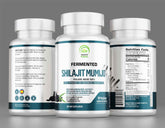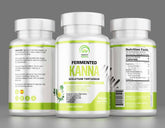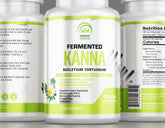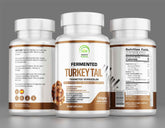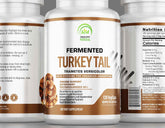Interaction with Food
How Food Affects Dietary Supplement Absorption: Key Interactions
In the pursuit of optimal health and wellness, dietary supplements have become an integral part of many individuals' routines. These supplements, ranging from vitamins and minerals to herbs and amino acids, are designed to enhance nutritional intake and support various health goals. However, the effectiveness of these supplements can be significantly influenced by their interaction with food. Understanding how dietary supplements interact with the food we consume is crucial for maximizing their benefits and ensuring they do not cause adverse effects.
This comprehensive guide will delve into the critical factor of food-supplement interactions, exploring how different types of food can affect the absorption, bioavailability, and overall efficacy of dietary supplements. By the end of this blog, you will have a clearer understanding of how to optimize your supplement intake through mindful dietary choices.
The Science Behind Food-Supplement Interactions
The human body is a complex system where nutrients from both food and supplements are absorbed, metabolized, and utilized. The interaction between food and supplements can either enhance or inhibit the absorption of nutrients, impacting their effectiveness. Several factors influence these interactions, including the type of nutrient, the presence of other compounds in food, and individual digestive and metabolic variations.
Absorption and Bioavailability
Absorption refers to the process by which nutrients pass from the digestive tract into the bloodstream. Bioavailability is the proportion of a nutrient that is absorbed and utilized by the body. Both absorption and bioavailability are critical for determining the effectiveness of dietary supplements.
-
Fat-Soluble vs. Water-Soluble Nutrients: Fat-soluble vitamins (A, D, E, K) require dietary fats for absorption, while water-soluble vitamins (B-complex, C) dissolve in water and are generally absorbed more readily.
-
Nutrient Interactions: Certain nutrients can either enhance or inhibit the absorption of others. For example, vitamin C enhances iron absorption, while calcium can inhibit it.
-
Food Matrix: The composition of food (e.g., fiber content, presence of other nutrients) can affect nutrient absorption. High-fiber foods, for instance, can bind minerals and reduce their absorption.
Enhancing Supplement Absorption with Food
To maximize the benefits of dietary supplements, it's essential to understand how certain foods can enhance nutrient absorption. Here are some key interactions to consider:
Fat-Soluble Vitamins and Dietary Fats
Fat-soluble vitamins (A, D, E, K) require the presence of dietary fats for optimal absorption. Consuming these vitamins with a meal that includes healthy fats can significantly enhance their bioavailability.
-
Vitamin A: Found in foods like carrots and sweet potatoes, vitamin A is best absorbed with dietary fats such as those found in avocados, nuts, and seeds.
-
Vitamin D: Often taken to support bone health, vitamin D supplements should be consumed with fatty fish, dairy products, or fortified foods to enhance absorption.
-
Vitamin E: Known for its antioxidant properties, vitamin E is better absorbed with oils, nuts, and seeds.
-
Vitamin K: Essential for blood clotting and bone health, vitamin K can be found in leafy greens and is better absorbed with healthy fats like olive oil.
Iron and Vitamin C
Iron is a critical mineral for blood health, but its absorption can be tricky. Non-heme iron (found in plant-based foods) is less readily absorbed than heme iron (found in animal products). However, vitamin C can enhance the absorption of non-heme iron.
-
Combining Foods: Pairing iron-rich foods like spinach, lentils, and beans with vitamin C-rich foods like oranges, strawberries, and bell peppers can boost iron absorption.
-
Supplements: Taking iron supplements with a glass of orange juice or a vitamin C supplement can enhance absorption.
Calcium and Vitamin D
Calcium is essential for bone health, but its absorption is significantly enhanced by vitamin D. Ensuring adequate levels of vitamin D can help the body utilize calcium more effectively.
-
Dairy Products: Dairy products naturally contain both calcium and vitamin D, making them an excellent choice for enhancing absorption.
-
Fortified Foods: Many plant-based milks and juices are fortified with both calcium and vitamin D, providing a convenient way to boost intake.
Magnesium and Fiber
Magnesium is involved in over 300 enzymatic reactions in the body, including those that produce energy and regulate muscle and nerve function. However, high-fiber foods can bind magnesium and reduce its absorption.
-
Balanced Diet: While high-fiber foods are important for overall health, it's beneficial to balance them with magnesium-rich foods like leafy greens, nuts, seeds, and whole grains.
-
Supplement Timing: To enhance magnesium absorption, consider taking magnesium supplements separately from high-fiber meals.
Omega-3 Fatty Acids and Fatty Foods
Omega-3 fatty acids, particularly EPA and DHA, are essential for cardiovascular health, brain function, and inflammation management. Their absorption is enhanced when taken with meals containing dietary fats.
-
Fatty Fish: Consuming omega-3 supplements with fatty fish like salmon or mackerel can improve absorption.
-
Nuts and Seeds: Including nuts and seeds in meals can also enhance the absorption of omega-3 supplements.
Inhibiting Supplement Absorption with Food
Just as some foods can enhance the absorption of dietary supplements, others can inhibit it. Understanding these inhibitory interactions is crucial for optimizing supplement efficacy.
Calcium and Iron
Calcium and iron are both essential minerals, but they can compete for absorption in the body. High levels of calcium can inhibit the absorption of iron, particularly non-heme iron from plant sources.
-
Separate Intake: To avoid interference, take calcium and iron supplements at different times of the day. For example, take calcium in the morning and iron in the evening.
-
Meal Planning: When consuming iron-rich meals, limit high-calcium foods like dairy products to other meals.
Phytates and Minerals
Phytates, found in whole grains, legumes, nuts, and seeds, can bind minerals such as iron, zinc, and calcium, reducing their bioavailability.
-
Soaking and Sprouting: Soaking and sprouting grains, legumes, and seeds can reduce phytate levels and enhance mineral absorption.
-
Fermentation: Fermented foods like sourdough bread and yogurt also have lower phytate levels and higher bioavailability of minerals.
Oxalates and Calcium
Oxalates are compounds found in certain vegetables, such as spinach, beet greens, and rhubarb, that can bind calcium and inhibit its absorption.
-
Variety in Diet: Include a variety of calcium-rich foods in your diet to ensure adequate intake despite the presence of oxalates in some foods.
-
Cooking Methods: Cooking oxalate-rich vegetables can reduce their oxalate content and improve calcium absorption.
Tannins and Iron
Tannins, found in tea, coffee, and some fruits, can inhibit the absorption of iron. This interaction is particularly relevant for individuals with iron-deficiency anemia.
-
Timing of Intake: Avoid consuming tea, coffee, and tannin-rich fruits close to meal times when taking iron supplements or eating iron-rich foods.
-
Enhancing Iron Intake: Combine iron-rich foods with vitamin C-rich foods to counteract the inhibitory effects of tannins.
Calcium and Magnesium
Calcium and magnesium can compete for absorption, particularly when taken in high doses. This interaction is important for individuals supplementing both minerals for bone and muscle health.
-
Separate Intake: Consider taking calcium and magnesium supplements at different times of the day to optimize absorption.
-
Balanced Diet: Ensure a balanced intake of calcium and magnesium-rich foods to support overall health.
Case Studies: Food-Supplement Interactions in Practice
To illustrate the importance of food-supplement interactions, let's explore some case studies demonstrating how dietary choices can impact supplement efficacy.
Case Study 1: Enhancing Iron Absorption
Background: Sarah is a 30-year-old woman diagnosed with iron-deficiency anemia. Her doctor prescribed iron supplements and recommended dietary changes to improve her iron levels.
Dietary Strategy: Sarah incorporated vitamin C-rich foods into her meals to enhance iron absorption. She started taking her iron supplement with a glass of orange juice and added strawberries to her breakfast cereal. She also avoided consuming high-calcium foods like dairy products during her iron-rich meals.
Outcome: After three months, Sarah's iron levels improved significantly, and her symptoms of fatigue and weakness diminished. Her doctor attributed the success to the enhanced absorption of iron facilitated by vitamin C-rich foods.
Case Study 2: Managing Calcium and Magnesium Intake
Background: John is a 55-year-old man with osteoporosis, taking calcium and magnesium supplements to support bone health and muscle function.
Dietary Strategy: John learned that high-fiber foods could inhibit magnesium absorption. He adjusted his supplement routine, taking magnesium in the evening and calcium in the morning. He also included magnesium-rich foods like almonds and spinach in his diet while balancing his fiber intake.
Outcome: John reported fewer muscle cramps and improved bone density after six months. His doctor noted that the improved absorption of magnesium, coupled with adequate calcium intake, contributed to these positive changes.
Case Study 3: Optimizing Vitamin D and Calcium
Background: Emma is a 65-year-old woman concerned about maintaining bone health as she ages. She takes vitamin D and calcium supplements and wants to ensure optimal absorption.
Dietary Strategy: Emma started taking her vitamin D and calcium supplements with her largest meal of the day, which included healthy fats from avocado and salmon. She also included fortified plant-based milks in her diet.
Outcome: After a year, Emma's bone density scans showed no further loss, and she felt more confident about her bone health. Her doctor highlighted the importance of dietary fats in enhancing the absorption of fat-soluble vitamin D and calcium.
Case Study 4: Overcoming Zinc Absorption Challenges
Background: Mark is a 40-year-old man experiencing frequent colds and poor wound healing. His doctor suggested he might have a zinc deficiency and recommended zinc supplements.
Dietary Strategy: Mark learned that phytates in his high-fiber diet might be inhibiting zinc absorption. He began soaking and sprouting his grains and legumes and included more zinc-rich foods like pumpkin seeds and beef in his diet.
Outcome: Mark noticed an improvement in his immune function and wound healing after a few months. His doctor confirmed that his zinc levels had increased, likely due to the improved bioavailability from his dietary adjustments.
Practical Tips for Optimizing Food-Supplement Interactions
Implementing strategies to enhance or minimize food-supplement interactions can help maximize the benefits of dietary supplements. Here are some practical tips to consider:
Combine Supplements with Complementary Foods
-
Fat-Soluble Vitamins: Take vitamins A, D, E, and K with meals that contain healthy fats to enhance absorption.
-
Iron and Vitamin C: Pair iron supplements with vitamin C-rich foods to boost iron absorption.
-
Calcium and Vitamin D: Ensure adequate vitamin D intake to optimize calcium absorption.
Separate Competing Nutrients
-
Calcium and Iron: Take calcium and iron supplements at different times to avoid absorption interference.
-
Magnesium and High-Fiber Foods: Consume magnesium supplements separately from high-fiber meals to enhance absorption.
Modify Food Preparation Methods
-
Soaking and Sprouting: Reduce phytate levels in grains, legumes, and seeds by soaking or sprouting them before consumption.
-
Cooking Oxalate-Rich Vegetables: Cook vegetables like spinach and beet greens to lower oxalate content and improve calcium absorption.
Monitor Individual Responses
-
Track Supplement Intake: Keep a journal of your supplement intake, noting the foods consumed and any changes in health or symptoms.
-
Adjust as Needed: Based on your observations and any feedback from healthcare providers, adjust your supplement routine to optimize interactions with food.
Conclusion
Understanding the interactions between dietary supplements and food is essential for maximizing the benefits of supplementation and ensuring optimal health outcomes. By being mindful of how different foods can enhance or inhibit nutrient absorption, you can make informed choices that support your health goals. Whether you are looking to boost energy, improve bone health, support immune function, or address specific nutritional deficiencies, optimizing food-supplement interactions is a critical factor in achieving success.
In summary, dietary supplements can play a valuable role in enhancing health and well-being when taken correctly. By considering the interactions between supplements and food, you can optimize the absorption and bioavailability of essential nutrients, ensuring you receive the maximum benefit from your supplement regimen. This involves not only choosing the right supplements but also incorporating complementary foods, separating competing nutrients, and modifying food preparation methods as needed.
Ultimately, the goal is to empower individuals with the knowledge and resources they need to make informed decisions about their health. By continuing to prioritize education, research, and practical strategies for optimizing food-supplement interactions, the dietary supplements industry can support healthier, more informed communities and contribute to the overall well-being of the global population.
Storage and Shelf Life of Dietary Supplements: Ensuring Potency and Safety
This comprehensive guide explores the best practices for storing dietary supplements and understanding their shelf life to ensure they remain potent and safe for consumption..
- Choosing a selection results in a full page refresh.



